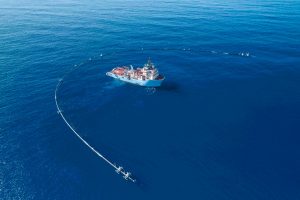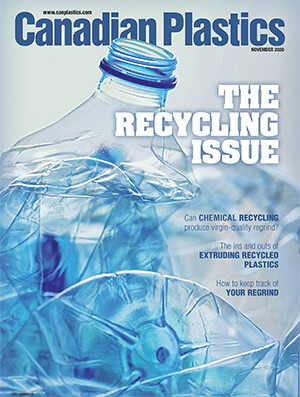
Ocean Cleanup mission failed because of material fatigue, investigators say
Canadian Plastics
EnvironmentThe ambitious system failed on Dec. 29 when a 60-foot length of the device deployed in the so-called Great Pacific Garbage Patch between Hawaii and California broke off.

The Ocean Cleanup at sea.
Photo Credit: The Ocean Cleanup
The ambitious Ocean Cleanup, a Dutch non-profit that in September launched a plastic cleanup system meant to rid the world’s oceans of plastic pollution, failed because of material fatigue coupled with stress concentration from a weld, an analysis indicates.
The ambitious system failed on Dec. 29 when a 60-foot length of the device deployed in the so-called Great Pacific Garbage Patch between Hawaii and California broke off, which necessitated towing the entire 2,000-foot device to Hawaii for testing and inspection.
After several weeks of analysis, inspectors have now found that material fatigue caused a piece of three-inch thick high-density polyethylene pipe to crack and break, spokesman Alan Dunton told news agencies on March 1. “The team hasn’t determined the exact fix yet,” he said.
According to Dunton, he and his team believe the action of the waves causing the device to rise and fall in the water resulted in over 1.5 million load cycles on the material. Each load cycle is a time when the plastic flexed. That, combined with a local stress concentration from a weld, caused the pipe to fracture, Dunton said.
The Ocean Cleanup system involves a 2,000-foot floating series of connected plastic pipes shaped like a giant U on the surface of the ocean. Below that hangs a nine-foot skirt that corrals the tiny pieces of plastic trash that float in the water. The action of the currents and waves is meant to push trash into the system’s centre while the micro-plastic and other debris gets captured by the hanging barrier. The system was dispatched to the Great Pacific Garbage Patch, which is a highly publicized large floating field of debris, from San Francisco in September 2018.
The Ocean Cleanup system has come under fire from some critics who say that efforts should be aimed at preventing plastics from going into the ocean in the first place, and that the barrier project could divert resources away from that goal. Others have expressed concern about the barrier’s impact on marine wildlife.
